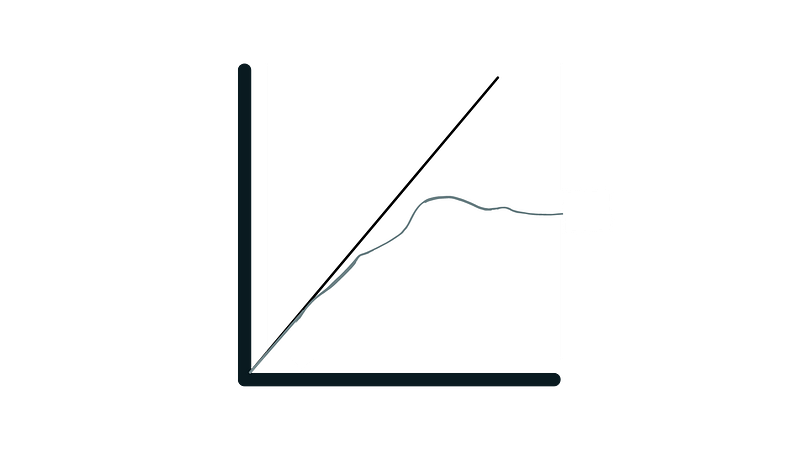Embrace the chaotic nature of life.

Have you ever wondered how things would have gone differently if you tweaked your starting condition just a tiny bit?
Tiny changes can lead to entirely different results.
In 2013 I failed my undergrad studies’ most important exams by 0.25 points. I had to wait for six months before I was allowed to retake it. I was furious and disappointed. I doubted my aptitude and looked for things to do instead of studying.
I paused my studies for a year and worked for a startup in India, a German bank in Shanghai, and an education project in Argentina. These experiences shaped my drive for education and entrepreneurship — the things I work for now.
But what if I hadn’t failed the exam? I would have followed the beaten track, doing an internship at KPMG or PWC and pursue a corporate career. A minimal change in the starting conditions (such as 0.25 points in an exam) can have a tremendous effect on the outcome.
Understanding the butterfly effect can alter your perspective on decision-making and predictability.
The Butterfly Effect — And Why Nobody Can Accurately Predict the Weather
“You could not remove a single grain of sand from its place without thereby … changing something throughout all parts of the immeasurable whole.”
Many people have heard of the butterfly effect because of the American science fiction film from 2004. Ashton Kutcher travels back in time to change his troubled childhood.
But only a few know that the movie misinterprets the effect. The storyline suggests you can calculate the effect with certainty, but nothing could be further from the truth.
The butterfly effect is about the unpredictability of specific systems.
The concept is called the butterfly effect because a small act like a butterfly flapping its wings and cause a typhoon. And while the metaphor is exaggerated, small events can be a catalyst depending on starting conditions, as Lorenz’s discovery shows.
Edward Lorenz, a meteorologist, mathematician, and professor at MIT, discovered the Butterfly Effect while observing his weather prediction model in the 1960s.
He entered initial conditions slightly different from each other into his computer program (0.506 instead of 0.506127). As a surprising result, these tiny differences led to completely different predictions. A tiny change in initial conditions had created a significantly different outcome.
“I found that the new values at first repeated the old ones, but soon afterward differed by one and then several units in the last decimal place, and then began to differ in the next to the last place and then in the place before that. […] The initial round-off errors were the culprits; they were steadily amplifying until they dominated the solution.”
— Edward Lorenz in The Essence of Chaos.

“It’s impossible for humans to measure everything infinitely accurately,” says Robert Devaney, a mathematics professor at Boston University, in an interview with the Boston Globe. “And if you’re off at all, the behavior of the solution could be completely off.”
So what Lorenz showed is that even if we think we have precise initial conditions, certain systems aren’t predictable. That’s why meteorologists can’t predict the weather beyond a few weeks.
Lorenz concluded that most weather predictions are inaccurate because we never know the exact starting conditions. In essence, the butterfly’s wing is a symbol of an unknown change.
Examples of the Butterfly Effect that Changed the World Forever
But there’s more to this effect than my statistics exam and inaccurate weather predictions. The butterfly effect can change history, and knowing these examples helps will help you be more realistic about forecasts and decision-making.
Franz Ferdinand
In 1914 a gunshot reshaped the world. It was June 28, and Archduke Franz Ferdinand had just escaped a bomb attack aimed at his car. To save Ferdinand from further attacks, the driver was supposed to change the route — yet he didn’t get the message and took a wrong turn. Franz Ferdinand and his wife were killed, which set off a chain of events that led to World War I.
What if the driver would have gotten the message?
Covid-19
The World Health Organization supports the hypothesis that the Covid-19 outbreak started through a transmission from a living animal to a human host.
What if there were no living animals in the Huanan Seafood Wholesale Market?
Adolf Hitler
In 1907 and 1908, he applied for art school but was rejected twice. Historians and scholars argue that these rejections formed him from an aspiring bohemian artist to the human manifestation of evil. We don’t know how things would have gone, but for sure, humanity would have been better of if Hitler spent his lifetime drawing watercolors.
What if the Academy of Fine Arts in Vienna accepted young Adolf Hitler as a student?
Final Thoughts
Even though we love to think we can predict outcomes by our actions, the butterfly effect shows we can’t. Seemingly insignificant moments can shape entire destinies.
We want our world to be comprehensible, but nature proofs us wrong. Our world is chaotic and can change from moment to moment. We’d love to use science to make precise predictions and get clear answers about the world we live in — yet science suggests we can’t.
Science can help us understand the universe, but as the butterfly effect shows, it does so by unraveling the limits of our understanding.
Yes, we can aim to create excellent starting conditions, but we don’t have the power to predict the outcome.
Small imprecisions have a significant impact — our world is unpredictable. If there’s one thing to be learned here, it’s that we can stop obsessing over outcomes.